May 20, 2025 | 09:33 GMT +7
May 20, 2025 | 09:33 GMT +7
Hotline: 0913.378.918
May 20, 2025 | 09:33 GMT +7
Hotline: 0913.378.918
Cao Lanh District has the most extensive and thorough embankment system in Dong Thap Province, with a total length of 1.633km, protecting an area of 36.527ha at an elevation of 2 - 4m.
Traveling through the fields in Cao Lanh, along the road leading to Ba Sao Commune, many of the third-season rice fields within the embankment area had just been harvested a few days ago, with straw burning scenes scattered everywhere.

The third-season rice fields in Hamlet 3, Ba Sao Commune (Cao Lanh District) faced reduced yield due to late harvesting. Photo: Kim Anh.
Rarely, the adjacent rice field of a farmer group in Hamlet 3 (Ba Sao Commune) faced delays in harvesting due to difficulties in negotiating prices with traders and the inability to find a harvester. As a result, the rice had to stay in the field for nearly 10 days, leading to inevitable losses.
Sitting on the embankment, watching the harvester work on his 5 rods (1.300 m²/rod) of family land, Mr. Nguyen Van Loi from Hamlet 3, Ba Sao Commune pointed sadly to the scattered sacks of rice in the field and said, “We’re only getting about 400 kg/rod on average".
Sitting nearby, Mr. Nguyen Van Be Hung, who also grew a third rice crop this year, didn’t fare much better. His harvester had cut 3 rods, but he only got 24 bags of rice. On top of that, the traders complained about the quality, deducting 2 - 3 kg/bag, leaving the yield at just 300 - 400 kg/rod. According to Mr. Hung, nowadays, growing three rice crops a year requires great skill to achieve higher profits compared to before.
Take Mr. Loi’s case as an example. His family switched to growing three rice crops a year in 2009. Now, he confirms that yields have steadily declined. When they used to grow two crops a year, it was easier to farm and yields of 900 kg to 1 ton/rod were common.
As time went on, the fields were no longer allowed to flood. After the third rice crop, farmers hurried to burn straw and till the soil in preparation for the winter-spring crop. This entire process took less than half a month, leaving the land with no time to rest.
"Switching from two crops to three is basically just replacing the old with the new, but all the money goes into materials!", Mr. Loi said with frustration.
Although he can't pinpoint the exact cause of declining yields, Mr. Loi is certain that it’s due to weather conditions and the increasing spread of pests and diseases, exacerbated by the lack of rest for the soil, which has become more degraded over time. This year, white planthoppers spread widely across nearly all the rice fields in Dong Thap Province during the third crop.
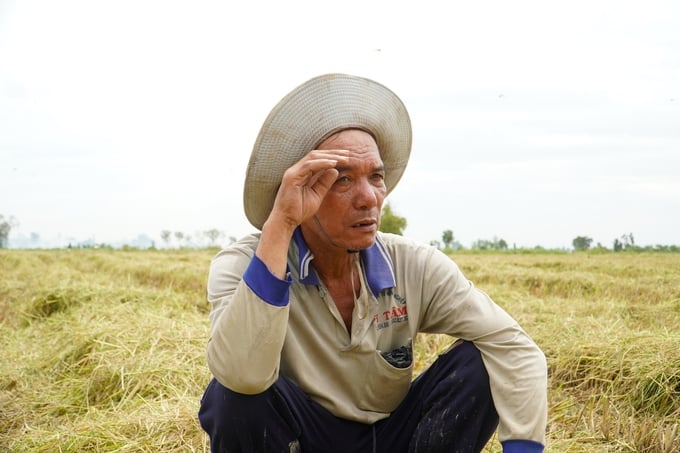
Mr. Nguyen Van Loi from Hamlet 3, Ba Sao Commune (Cao Lanh District) is disheartened by the low yield of his rice harvest. Photo: Kim Anh.
Mr. Loi added that many farmers in Hamlet 3, Ba Sao Commune, feeling anxious and spray pesticides every 7 to 10 days as a preventive measure.
“We have to buy the pesticides, we can’t just plant the rice and let it die. We have to push through. Right now, I’m farming a total of 15 rods, and I’ve already spent over 2.500 USD on materials. So far, I’ve harvested nearly 10 rods, but the rice I’ve sold has only brought in a little over 1.250 USD”, Mr. Loi shared.
In the hope of improving yields, many rice farmers express a strong desire to allow their fields to flood. According to Mr. Nguyen Van Loi, this would bring silt into the fields, resulting in better rice crops. However, for many years, this hasn’t been possible due to the continuous cycle of planting.
Mr. Loi himself is planning to convert around 4 to 5 rods of higher land into growing fruit trees like jackfruit and seedless lemons to improve his family's income. Yet, the local policy currently prohibits such conversions, and several farmers who have made unauthorized changes have been fined and written up.
Therefore, to sustain long-term rice farming, Mr. Loi is forced to find alternative ways to improve the soil by using organic fertilizers, microbial products, and, more affordably, fish emulsion from aquaculture farms to enrich the land.
The Thap Muoi canal supplies water into Ong Ca canal, which then flows into the in-field canals in Ba Sao Commune, including Duoi Chuot canal (as referred to by the locals).
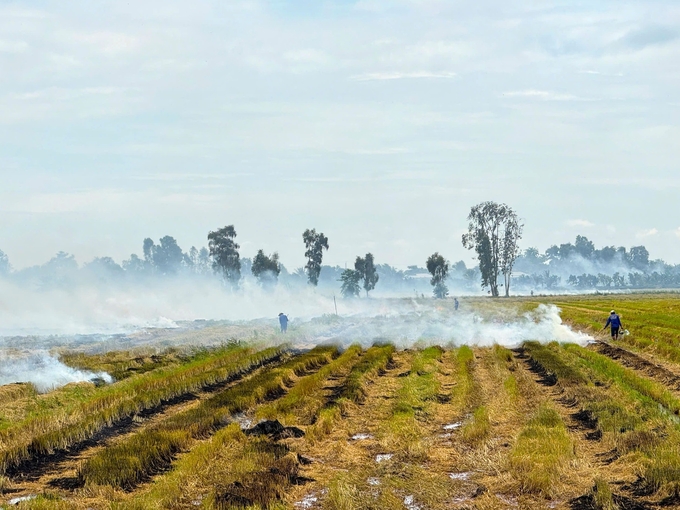
Just a few days after harvesting the third rice crop, farmers are busy burning the fields to prepare for planting the 2024-2025 winter-spring crop. Photo: Kim Anh.
This is a closed embankment area. While the top of the dike has not been fully reinforced, it still allows local farmers to grow three rice crops a year.
At noon, in the fields, many farmers carry bags of rice and sickles, taking the opportunity to gather any remaining stalks or scattered grains left over from the harvest.
Leisurely sitting by the canal fishing, Mr. Nguyen Van Ut from Hamlet 2, Ba Sao Commune, happily chatted with us after finishing the harvest of his 3 rods of the third rice crop, achieving a yield considered better than in other areas, at 800 kg/rod.
However, Mr. Ut also expressed concern about the heavy investment costs for rice production, while the price of rice has not increased much compared to over 10 years ago.
Initially, after switching to growing a third rice crop, the yields were very good, around 1 ton/rod. But over time, the soil has become increasingly degraded due to continuous farming. Allowing the fields to flood for just one month would be very beneficial for the farmers.
Meanwhile, when he used to grow two rice crops a year, Mr. Ut assessed that it required less labor and reduced costs. The land was fertile with alluvial soil. The floods not only deposited sediment on the fields but also flushed out pests, allowing the rice plants to grow stronger and better resist pests, reducing the need for agricultural inputs and fertilizers.
"The land doesn't get to rest now; we struggle for half a month and then plant again. In the past, we had one crop left to let the fields flood for about 2 to 3 months. Starting from mid-June, when the water rose, I would go set traps to catch snakehead fish or catfish, living comfortably and earning anywhere from about 33 USD to over 42 USD a day", Mr. Ut shared.
Mr. Ut currently wishes to convert his existing rice field into jackfruit cultivation and dig ponds for fish farming, but he has not received approval from the local authorities.
In fact, three years ago, the movement to convert unproductive rice fields into fruit tree cultivation and aquaculture in Cao Lanh District gained significant momentum.
In Hamlet 3, Phuong Thinh Commune, Cao Lanh District, amid the vast rice fields, the farm of Mr. Vo Hoang Khang is achieving high productivity.
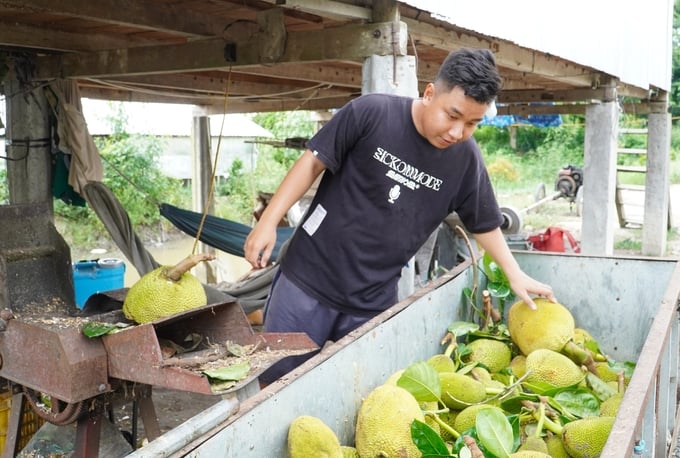
The circular economic model on Mr. Vo Hoang Khang's rice fields is proving to be stable and effective. Photo: Kim Anh.
The model is designed to be circular, with red jackfruit as the main crop. His family raises about 100 goats, utilizing by-products from jackfruit as animal feed. Additionally, goat manure is collected to compost for raising earthworms, creating organic fertilizer to supply back to the fruit orchards.
In the recent season, Mr. Khang's family sold about 70 goats at a price of approximately 3.5 USD/kg, resulting in an average profit of several thousand dollars.
Currently, the conversion process is being tightened, leading to a situation of "patchwork", where small fruit orchards are interspersed among large rice fields. This also creates conflicts in flood management among the residents. Therefore, whether they want to or not, farmers who have developed three rice crops a year now have no choice but to cling to their fields and find ways to restore the natural ecosystem.
Translated by Phuong Linh
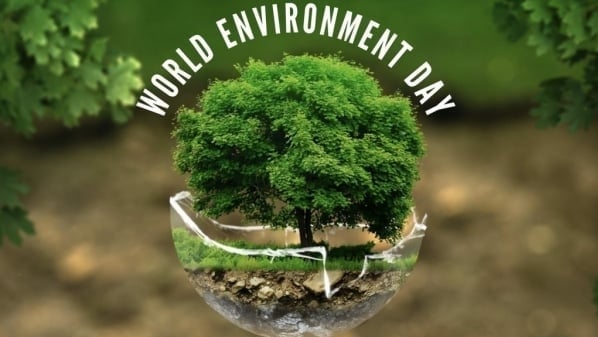
(VAN) World Environment Day 2025 (June 5) carries the theme 'Beat Plastic Pollution' continuing to emphasize the global urgency of addressing the plastic waste crisis.
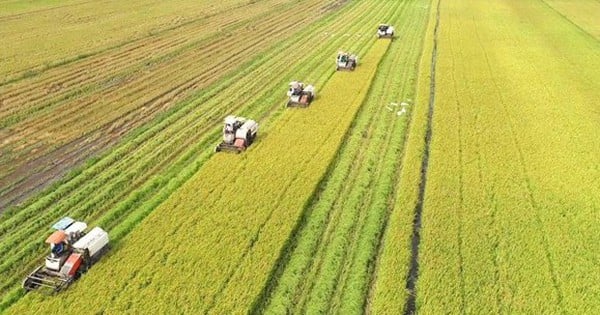
(VAN) This was the assessment shared by experts at the workshop titled 'Assessing the Role and Potential of Low-Emission Rice Production Systems in Vietnam,' held on the morning of May 19.

(VAN) Cai Rong Port is the fisheries control center of Quang Ninh, helping to monitor fishing vessels, combat IUU fishing, and remove the EC's 'yellow card'.
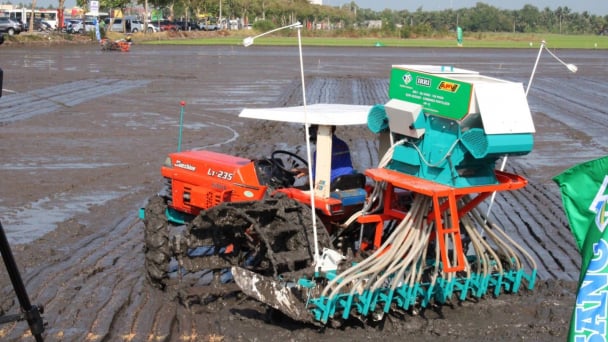
(VAN) The German Agricultural Society (DLG) explores the possibility of establishing a mechanization service center in Vietnam’s Mekong Delta to support farmers in accessing and utilizing advanced machinery.
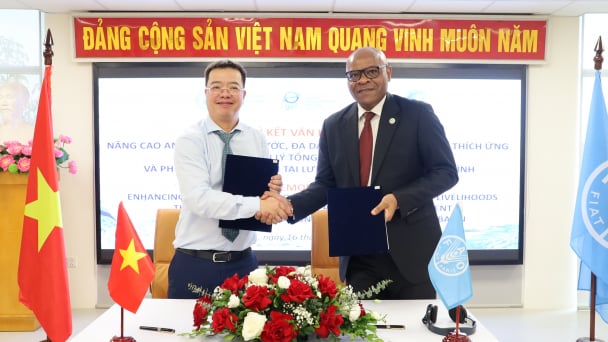
(VAN) On May 16, the Department of Water Resources Management, in collaboration with the Food and Agriculture Organization of the United Nations (FAO), held a signing ceremony for the GEF-8 project document.

(VAN) Food safety, mechanization, vocational training, and market opening are key areas of cooperation expected between the Vietnamese Government and the Federal Republic of Germany.

(VAN) Deputy Minister Nguyen Quoc Tri also expressed his hope that Cuba will soon overcome its current challenges, attain food security, and further expand cooperation with Vietnam.